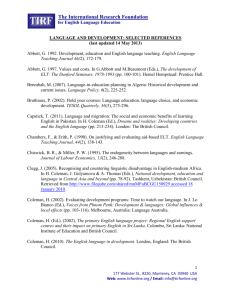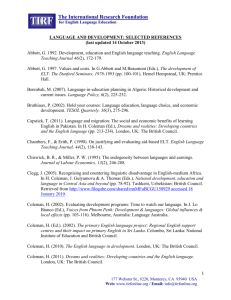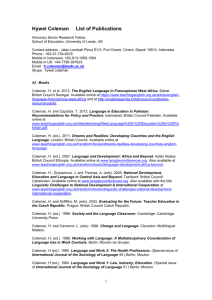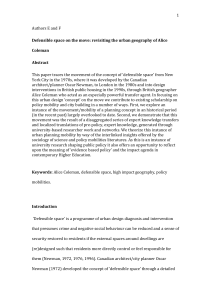Laudation for Professor John Clarkson & Professor Roger Coleman
advertisement
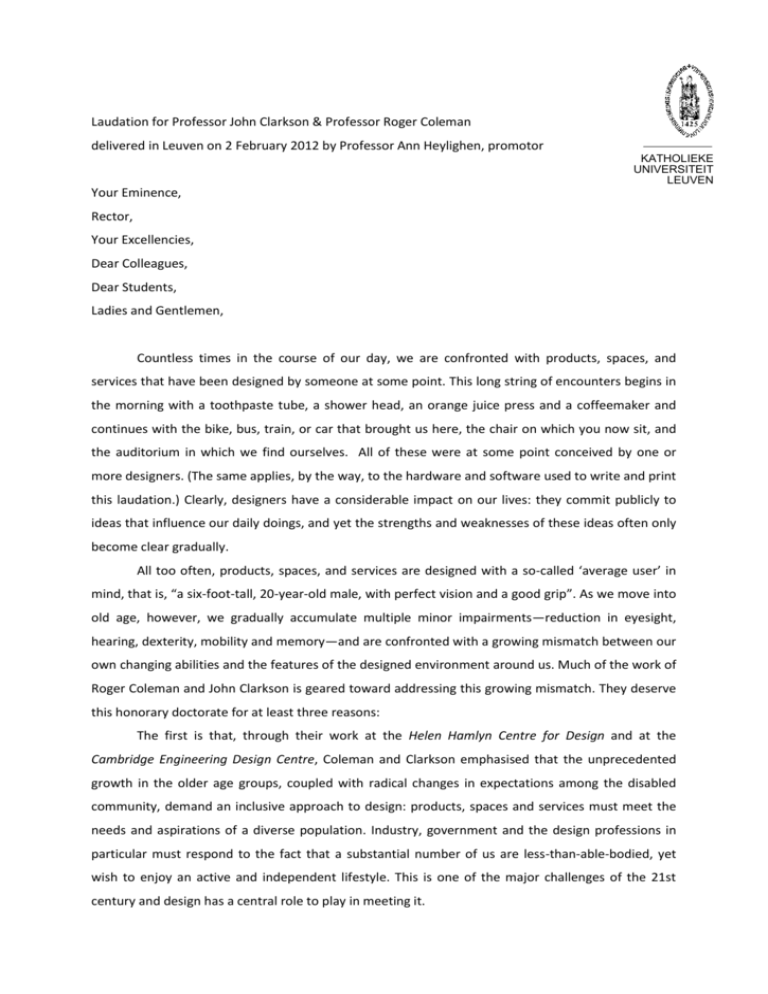
Laudation for Professor John Clarkson & Professor Roger Coleman delivered in Leuven on 2 February 2012 by Professor Ann Heylighen, promotor KATHOLIEKE UNIVERSITEIT LEUVEN Your Eminence, Rector, Your Excellencies, Dear Colleagues, Dear Students, Ladies and Gentlemen, Countless times in the course of our day, we are confronted with products, spaces, and services that have been designed by someone at some point. This long string of encounters begins in the morning with a toothpaste tube, a shower head, an orange juice press and a coffeemaker and continues with the bike, bus, train, or car that brought us here, the chair on which you now sit, and the auditorium in which we find ourselves. All of these were at some point conceived by one or more designers. (The same applies, by the way, to the hardware and software used to write and print this laudation.) Clearly, designers have a considerable impact on our lives: they commit publicly to ideas that influence our daily doings, and yet the strengths and weaknesses of these ideas often only become clear gradually. All too often, products, spaces, and services are designed with a so-called ‘average user’ in mind, that is, “a six-foot-tall, 20-year-old male, with perfect vision and a good grip”. As we move into old age, however, we gradually accumulate multiple minor impairments—reduction in eyesight, hearing, dexterity, mobility and memory—and are confronted with a growing mismatch between our own changing abilities and the features of the designed environment around us. Much of the work of Roger Coleman and John Clarkson is geared toward addressing this growing mismatch. They deserve this honorary doctorate for at least three reasons: The first is that, through their work at the Helen Hamlyn Centre for Design and at the Cambridge Engineering Design Centre, Coleman and Clarkson emphasised that the unprecedented growth in the older age groups, coupled with radical changes in expectations among the disabled community, demand an inclusive approach to design: products, spaces and services must meet the needs and aspirations of a diverse population. Industry, government and the design professions in particular must respond to the fact that a substantial number of us are less-than-able-bodied, yet wish to enjoy an active and independent lifestyle. This is one of the major challenges of the 21st century and design has a central role to play in meeting it. Coleman and Clarkson have made major contributions not only to the acknowledgement that designers have a role in meeting the challenges of population ageing, but also to our understanding of how designers can take up this role, which is the second reason why these men are worthy of this honorary doctorate. Both pioneered research into how older and disabled persons can be integrated within mainstream society through design. To this end, they successfully combined the creative methods of the Royal College of Art with the analytical engineering approach of the Cambridge Engineering Design Centre. The former developed innovative ways to involve users—in particular, older users and users with an impairment—in the design process. The latter pioneered the use of population data in design, which has led to the concept of the exclusion audit. This is a tool that enables designers to assess how many people cannot use a particular product or service under development. This brings us to the third reason for honouring Coleman and Clarkson today: their roles as bridge builders. The successful combination of the RCA’s creative methods and Cambridge’s engineering approach is but one example of the bridges Roger and John have built (and continue to build). To address the challenges presented by the ageing population, they crossed the boundaries of several disciplines and communities: students, professional designers, academics, and users— especially older and disabled ones. At the Helen Hamlyn Centre for Design, a multi-disciplinary team of designers, engineers, architects, anthropologists, and communication experts collaborate with academic, industry, government and volunteer partners, to advance an approach to design that is people-centred and socially inclusive. Worth mentioning here is also the joint i~design research programme, in which both the Helen Hamlyn Centre for Design and the Cambridge Engineering Design Centre are involved, and which aims to develop inclusive design tools and guidance industry to help industry in reducing exclusion when developing a new product or service. John Clarkson and Roger Coleman relay a strong message to young people: the challenges presented by our ageing population do not concern policy-makers and social security specialists alone. The ageing population is about, as Roger has written, “our future selves”, and it calls out to many different disciplines, including, as both have shown, design and engineering. For these reasons, I ask you, honoured Rector, on the recommendation of the Academic Council, to confer the degree of doctor honoris causa of the KU Leuven upon Professor John Clarkson and Professor Roger Coleman.













